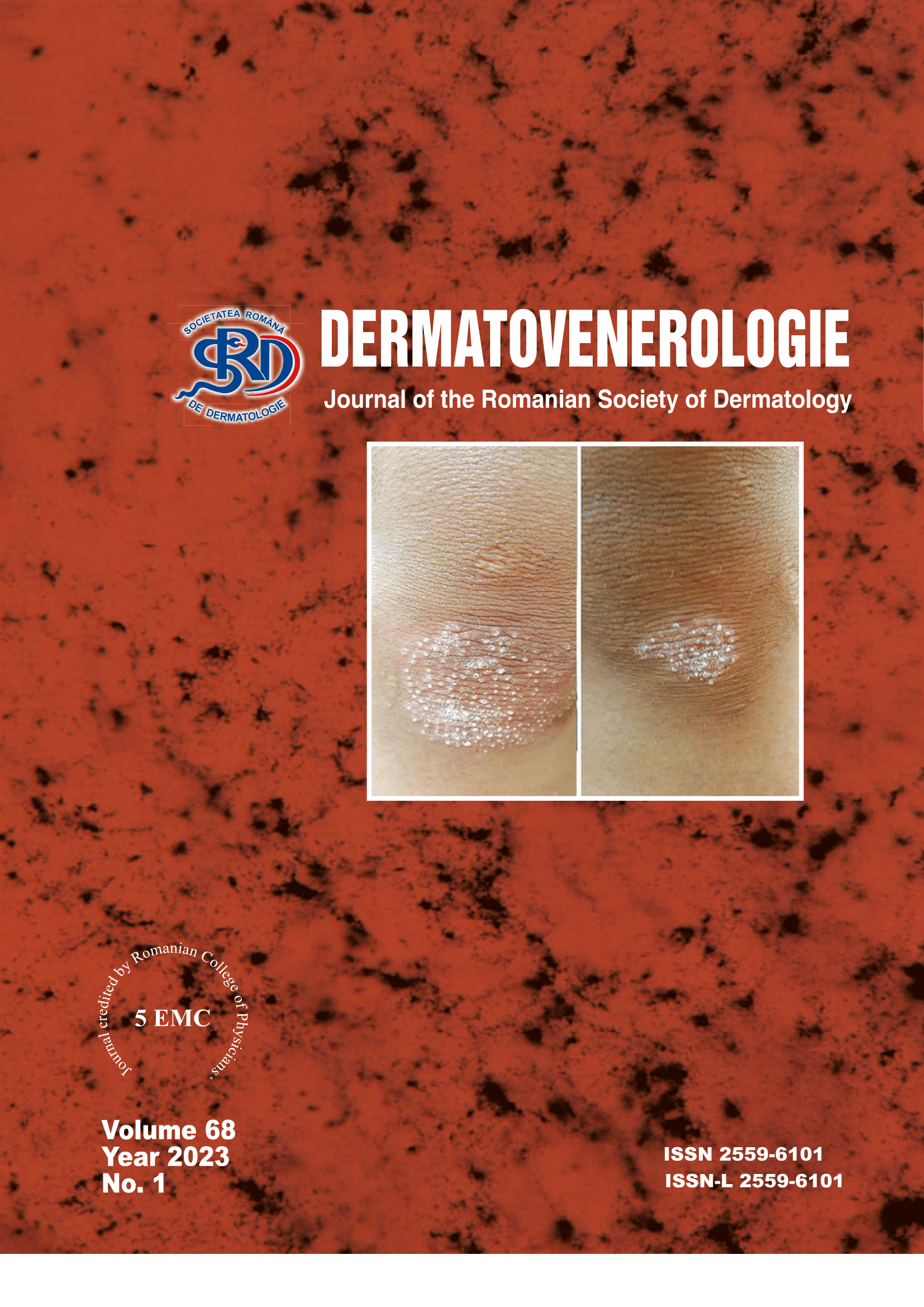Summary
Fixed drug eruption is a cutaneous allergic reaction characterized by the clinical appearance of a single or multiple erythematous-violaceous plaques, occurring each time upon exposure to the implicated agent and with the same location. These lesions can be difficult to diagnose due to their resemblance to other pathologies (auto-immune bullous diseases, erythema multiforme, vasculitic urticaria etc).
We present the case of a 59-year-old patient with numerous comorbidities who presented with the occurrence of an eruption consisting of multiple well-demarcated erythematous-vio-laceous plaques on the trunk and arms, evolving for approximately 2 months.We note the difficulty in obtaining a medical history, as the patient had bilateral conductive hearing loss. Thus, communication was facilitated through written language and family members, highlighting a possible correlation between the onset of lesions and the administration of gastro-enterological treatment with antispasmodics and proton pump inhibitors.
Based on the patient’s complaints, medi-cation history, and clinical manifestations, suspicion of fixed drug eruption was raised and confirmed through histopathological exami-nation. Although the clinical and paraclinical data support the diagnosis of fixed drug eruption, it was not possible to identify a specific implicated medication, leading to the admi-nistration of symptomatic corticosteroid treat-ment with favorable evolution.
Fixed drug eruption represents a delayed-type hypersensitivity reaction (type IV) with cutaneous clinical manifestations that are difficult to diagnose due to their heterogeneous appearance, requiring a high degree of suspicion (especially in cases where the disease history and medication consumption cannot be easily determined).


